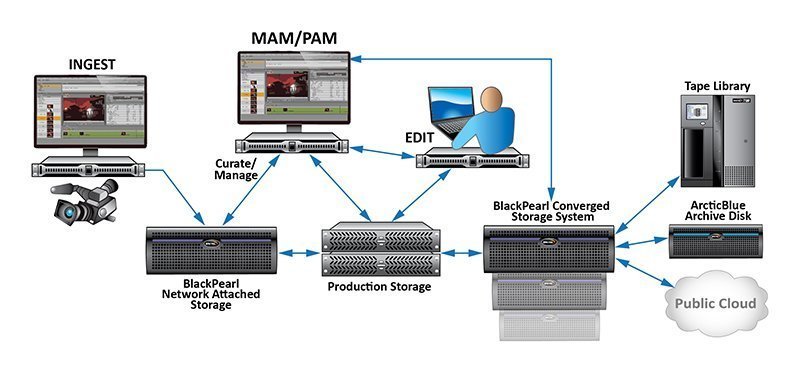Spectra Logic BlackPearl NAS disk appliance launches
Spectra Logic has added a midrange BlackPearl NAS disk appliance to augment its tape-based object storage.
Spectra Logic launched the object-based BlackPearl line as a linear tape file system gateway in 2013, integrating a RESTful interface modeled after Amazon Simple Storage Services (S3). The disk appliance released Tuesday is branded as Spectra Logic BlackPearl Network Attached Storage (NAS). It exports file and object interfaces.
The Spectra Logic BlackPearl NAS archive can be configured as a converged system to replicate inactive primary data to multiple targets, including the cloud, a backup BlackPearl disk appliance and Spectra tape libraries.
“Customers with a file domain work flow can start out with a Black Pearl (NAS) and upgrade over time to a full object or converged storage platform,” Spectra Logic CTO Matt Starr said.
The Spectra Logic BlackPearl NAS caters mostly to media and entertainment companies that run a file domain workflow. Spectra Logic integrated the code base of its Verde NAS product, notably its Network File Interface (NFI) application to transparently move file data to back-end object storage.
When set up as a mount point, NFI takes a snapshot of the file system and sends only deltas to an object interface or cloud bucket. Customers can retrieve the data locally using the Spectra Logic Eon browser.
“It’s the same BlackPearl hardware, but we’re pulling in more of the Verde functionality to make a more feature-rich product,” Starr said. “This system takes lesser changing data and pushes it to BlackPearl NAS, and then allows NFI to make copies” to backup targets, he noted.

This diagram illustrates how the Spectra Logic BlackPearl Network Attached Storage media appliance works.
An entry-level BlackPearl NAS disk appliance is a 2U rack that takes two expansion chassis. List price is $14,200 for a 2U, eight-drive building block.
The densest configuration is a 4U product that scales to 7.1 PB. It scales to nine expansion chassis and 40U. The 4U master node houses 8 TB archive hard drives.
Starr said Spectra Logic BlackPearl NAS capacity can extend to hundreds of petabytes when used in conjunction with back-end tape storage.
